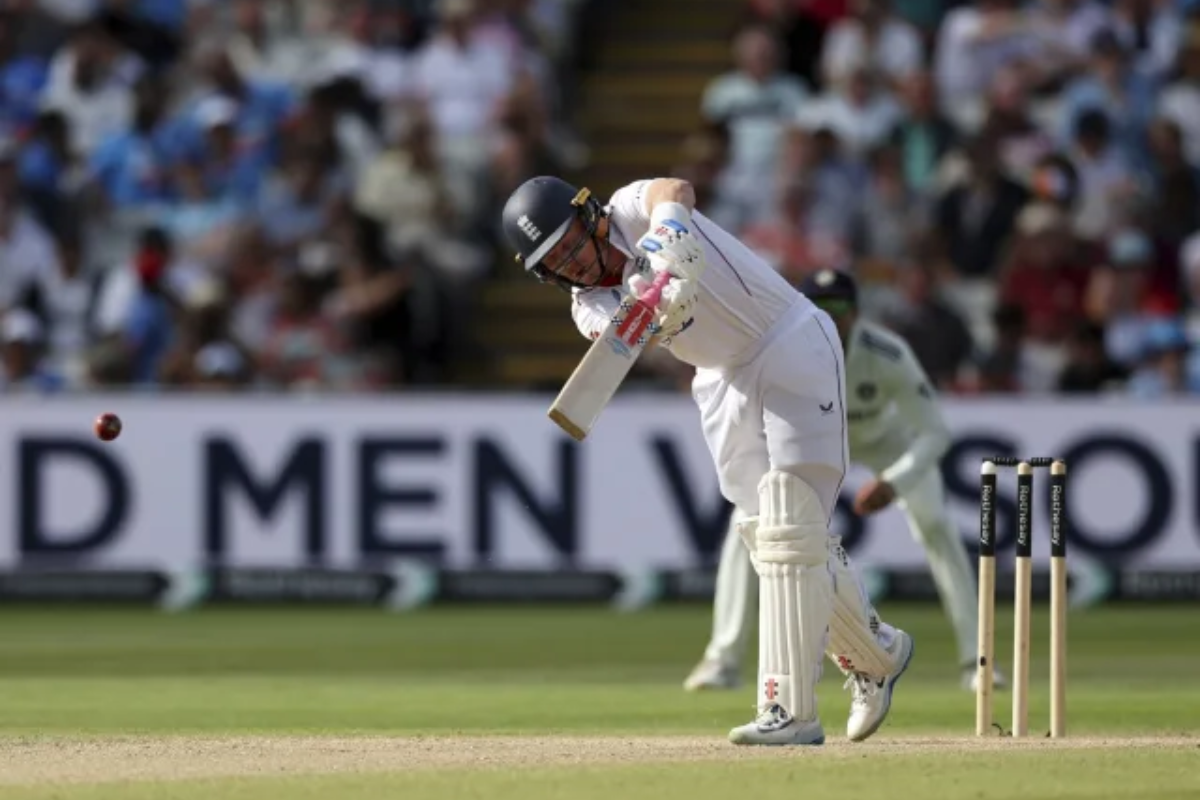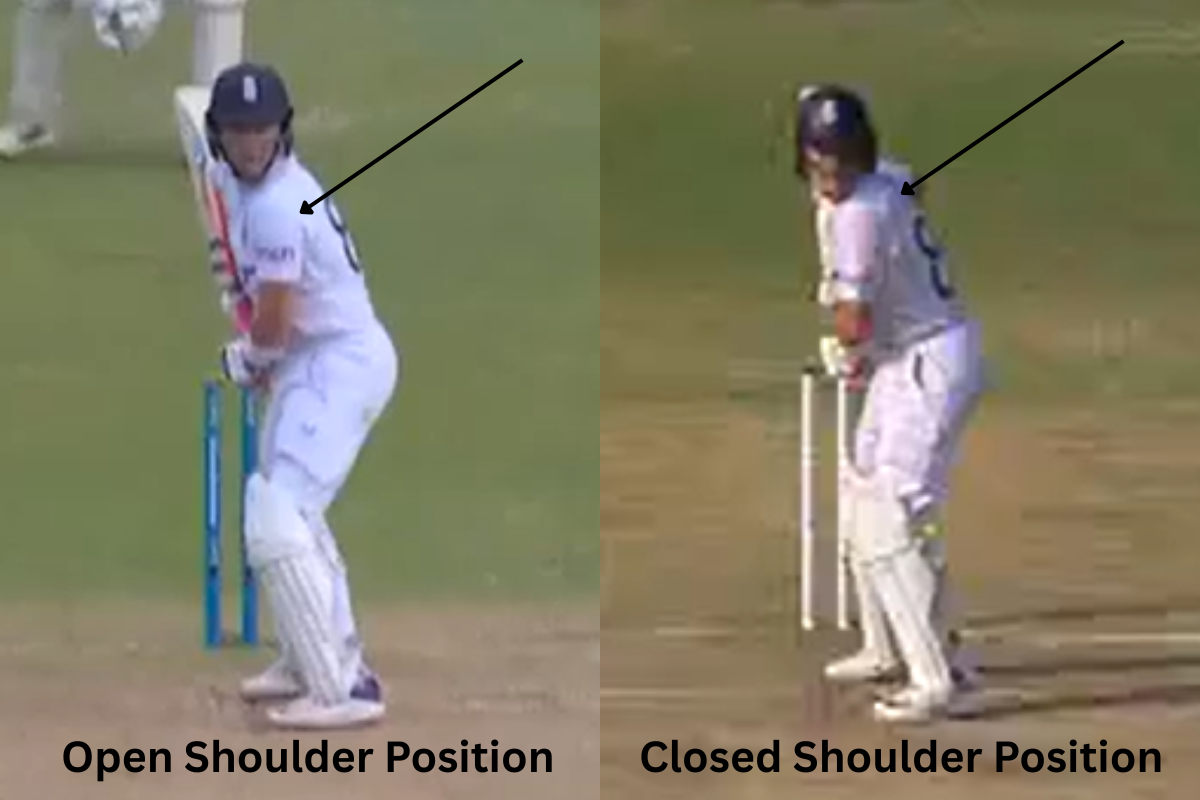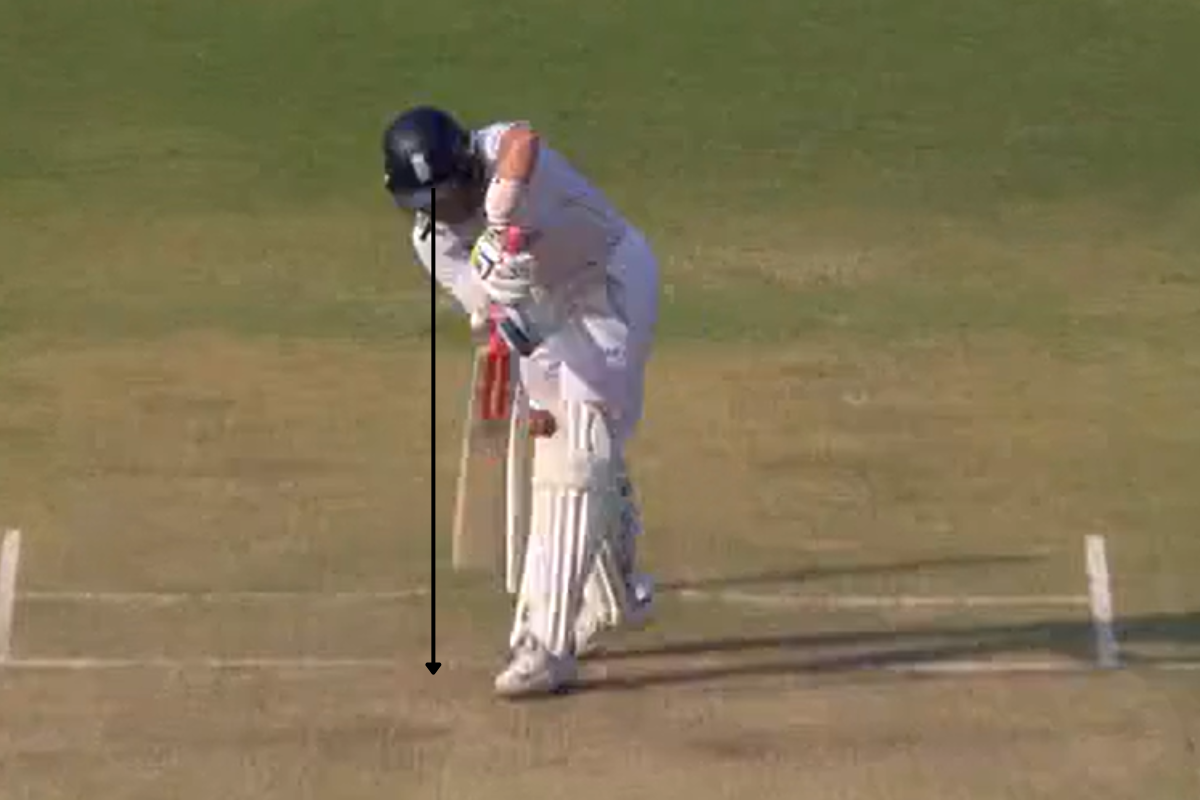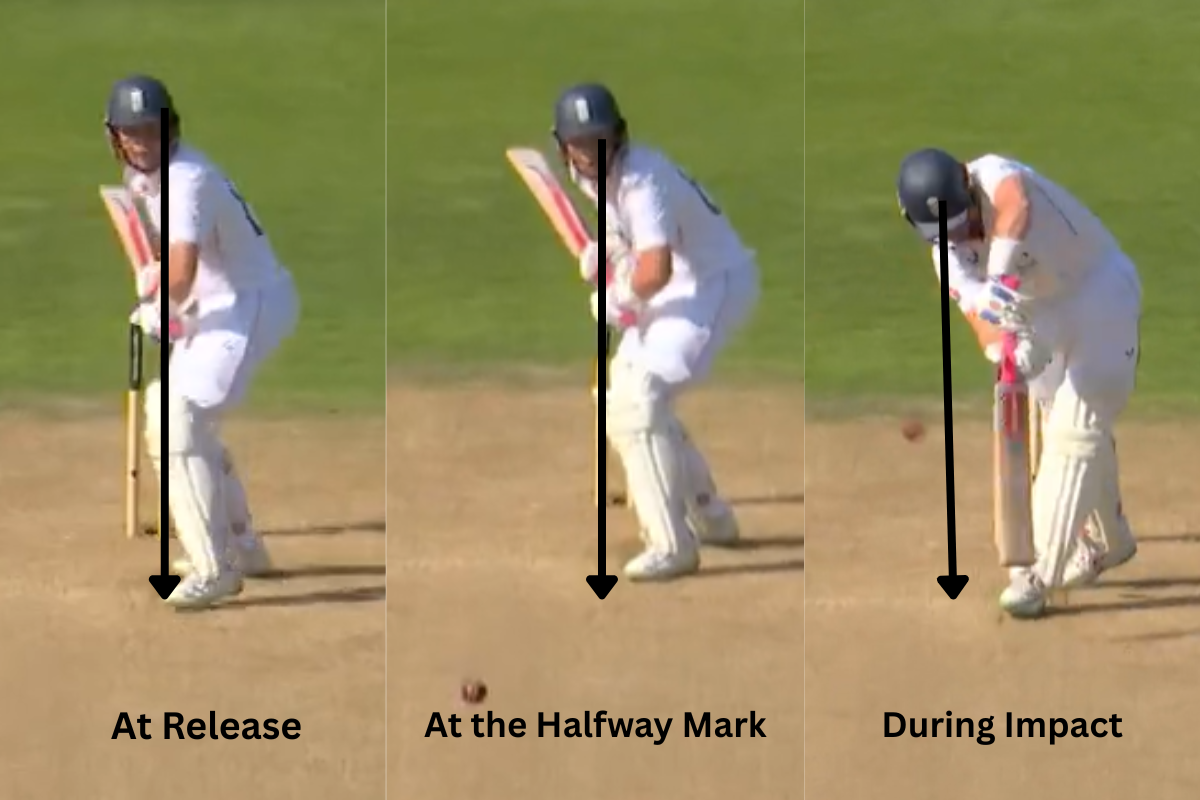
Since June 2022, Ollie Pope has batted at number three on 30 occasions in Tests.

Batting is an art. The essence of batsmanship is far more than just runs. The number of runs scored is an outcome of the process, which involves innumerable nitty-gritties. The impact that a batter can have on a game stands way more superior than the number of runs one can accumulate.
It, therefore, becomes very important to derive conclusions based on context, rather than simply numbers. At the end of the day, the process and the grind are the components that put Test cricket on the pedestal that it stands upon.
A simple cover drive, which is one of the most famous shots in the batting textbook, needs so many components to come together to create a complete moment. A batter hitting a cover drive to perfection is like a painting with the perfect complexion of colours in it. And what makes it even more beautiful is that there’s no stereotype to separate one from another. The quick analysis of the length of the ball, followed by the decision made in a split second, resulting in the bat coming down with a strong bottom-hand. The front foot approaches the ball, in sync with the bat, and then makes contact like it is a conversation for the ages – Poetry!
But sometimes, the process falters. The front foot doesn’t go towards the pitch of the ball. The head falls over. Or the shoulder opens up to the swing. Everything seems unsure. And the decisions made are too late. Everything happens in a split second. But yes, it is still too late!
The dismissals of Ollie Pope in the second Test at Edgbaston aren’t far away from the second scenario. His century in the first Test, apart from the dropped catches, was picturesque. Over the course of his career, Pope’s stance has seen minor changes. His stance in the earlier days used to be a lot more crouched than it is today. However, the English No.3 has a slight loophole in his game, which Akash Deep exploited brilliantly in the second Test in Birmingham.
The right-handed stylish batter has walked out to bat at No.3 on 30 occasions in Tests, scoring 2162 at an average of 42.39. Having eight tons and seven fifties at the spot, his numbers speak for themselves. And even if Wiaan Mulder had just proved it wrong for the time being, batting at three isn’t everyone’s cup of tea.
Batting has got a mental side to it. A batter’s journey through his innings doesn’t start when he takes guard. It starts a lot earlier than that. Maybe just before he’s walking in. Maybe just after the toss. It might start just on the morning of the game. Or maybe even on the previous evening. Though this phenomenon isn’t limited to just batters, it can play a huge role, especially in the mind of a No.3. Add to it a five-day game, and the intensity goes up multiple times. It is said that the best batter in the team often bats at three. Though this may have changed over a period of time, its essence ceases to fade away.
The player batting at No.3 is half an opener. As the two openers walk out to bat, the third one sits in the stands with his helmet on. And the journey begins. On some occasions, the journey is a short one. A No.3 might have to face the second ball of the match.
But on some occasions, the journey knows no bounds. It is mentally draining. The concept of waiting drains one’s energy over a period of time to the extent that it can be felt. Hence, a batter at No.3 has to be excellent at managing emotions. This is reflected in some of the players who have scored the most runs at three in the longest format include Kumar Sangakkara, Rahul Dravid, Ricky Ponting, and Kane Williamson.
Brendon McCullum took over England’s reins from Chris Silverwood in 2022. Post that, England have changed the way they have played Test cricket. The pitches at home have become flatter, and the approach tenacious. The English are walking into press conferences declaring that they’d chase whatever the opposition sets. They are declaring their playing XIs one or two days before the commencement of the Test. Proper Chivalry stuff! Having said that, another thing that the Three Lions are doing well is giving their players a long rope. The chopping and changing of teams is very rarely a thing that this side follows. And it has a lot to do with their approach or theory of Bazball.
Ollie Pope walked in to bat at number three in Tests for the first time on June 2, 2022, against New Zealand at Lord’s. He scored a seven and a 10. The hosts persisted with him in the next Test and reaped rewards. He scored a magnificent 145 in the very next Test in Nottingham. One of the many things McCullum has done throughout his stint is persist with players in their respective positions. And so, Pope has been a regular at the spot. Apart from him since June 2022, only Joe Root, Ben Stokes, Jacob Bethell, and Moeen Ali have batted at three for England in Tests, sharing just eight matches combined. Will Jacks and Harry Brook have also done the honours, sharing just two games in between them.
The important junctions that lead to the success of a batter in terms of technique are – the stance, the shuffle, the front-press, the footwork, and the synchronisation of the head with the footwork. Out of these, the shuffle and the front-press differ from batter to batter. The head position is one of the most important aspects for a batter. This is primarily because the head is the heaviest part of the body. And hence, the body will follow the direction of the head. Batters who can keep their head supremely steady at the time of connection are the ones who generally go on to become the greats of the game.
Though Ollie Pope has got wonderful hands, what is not working in his favour is his head position. The 27-year-old is a strong bottom-hand player who can change the angle of the face at will to clear the gaps. Pope has made minor adjustments to his stance over the past few years, and that has put him in a bittersweet position. Though his balance has improved, his front foot isn’t able to move quickly to the line of the ball in order to cover the angle. Let’s look at a breakdown of Ollie Pope’s technique and what we can infer from the same. There are two aspects that we need to look at closely.

The picture on the left is from 2023. The one on the right is 2024. As we can see, Pope’s shoulder position was a lot more open in 2023, as compared to 2024. This makes life difficult to face the swinging ball. The left shoulder tends to open up a lot more quickly, resulting in an error in case the ball nips away. The idea for a batter to have a closed shoulder position is to not let the stance open up too early to the delivery. The way he lost his wicket to Akash Deep in the first innings of the second Test is a classic example of the same.
The image on the right is an adjustment he made to cover the loophole. As compared to the picture on the left, his shoulder position is a lot closer, which allowed him to maintain a good position. When the left shoulder of a right-hand batter is closed, it helps the batter get a good idea about where his off-stump is. And knowing where the off-stump is would be one of the most important aspects of Test match batting.
As we spoke, the head position is one of the most important aspects of batting. Where the head goes, the body will follow. The image that you see is from England’s away series against India in 2024. Pope was dismissed by a delivery from Mohammed Siraj which pitched on a good length. The ball angled back in to hit the front pad of Pope, which was given not out. The Indians reviewed, and the decision was overturned. As a result, the Englishman had to walk back. But that’s not the point here.

The point is Pope’s head position. His head has fallen over to the offside, which has got his bat down at a certain angle. The very first thing that happens when a batter’s head falls over is that he loses control. His bat face suggests that he is trying to hit the ball to mid-wicket. But that is never going to happen, because his head isn’t in the position. To hit a ball towards mid-wicket, the head should be on top of the ball at the point of connection. Even when we look at how Akash Deep got him out in the first innings at Edgbaston, his head was all over the place.

As we can see, the first part of the image is during release. This is the closest his head is to where it actually should be. The shoulder has also opened up a bit, and there are glimpses of his right shoulder coming through. He is anticipating the ball to pitch in line and move away. The second part of the image is the one after release. Though the ball is on its trajectory to pitch in line, his head has already started falling over. Also, his front foot is fully planted when the ball is halfway through. His technique isn’t going to allow him to take a full stride ahead. The last image is when he makes contact. We can see that his head has fallen over, front foot nowhere in position, and bat pointing towards mid-on. His front foot isn’t fully planted, even at the time of impact.
ALSO READ:
One of the intricacies of playing red-ball cricket well is waiting for the ball to come to you. As a batter, one cannot rush towards the ball. Ollie Pope will have to make sure his head position is in place. India will try to attack him in the same region again at Lord’s. And now that there’s life in the wicket, the battle has become all the more interesting to see. Not to mention the addition of Jasprit Bumrah into the mix. India’s prime pacer is a supreme reader of what the batter is trying to do, and this plan will surely be on his mind.
As for Pope, it will be extremely important to wait for the ball to come to him. His head position needs to massively improve. England have opted for a lively wicket at the Home of Cricket, and that can turn against them. England’s batting will be highly under the radar, and Pope will have to rise to the occasion. It isn’t unknown territory for him, as he is coming off a century in the first Test. Maybe he will get another one, maybe he won’t. But what will be important to see is the battle between bat and ball.
For more updates, follow CricXtasy on Facebook, Instagram, Twitter, Telegram, and YouTube.